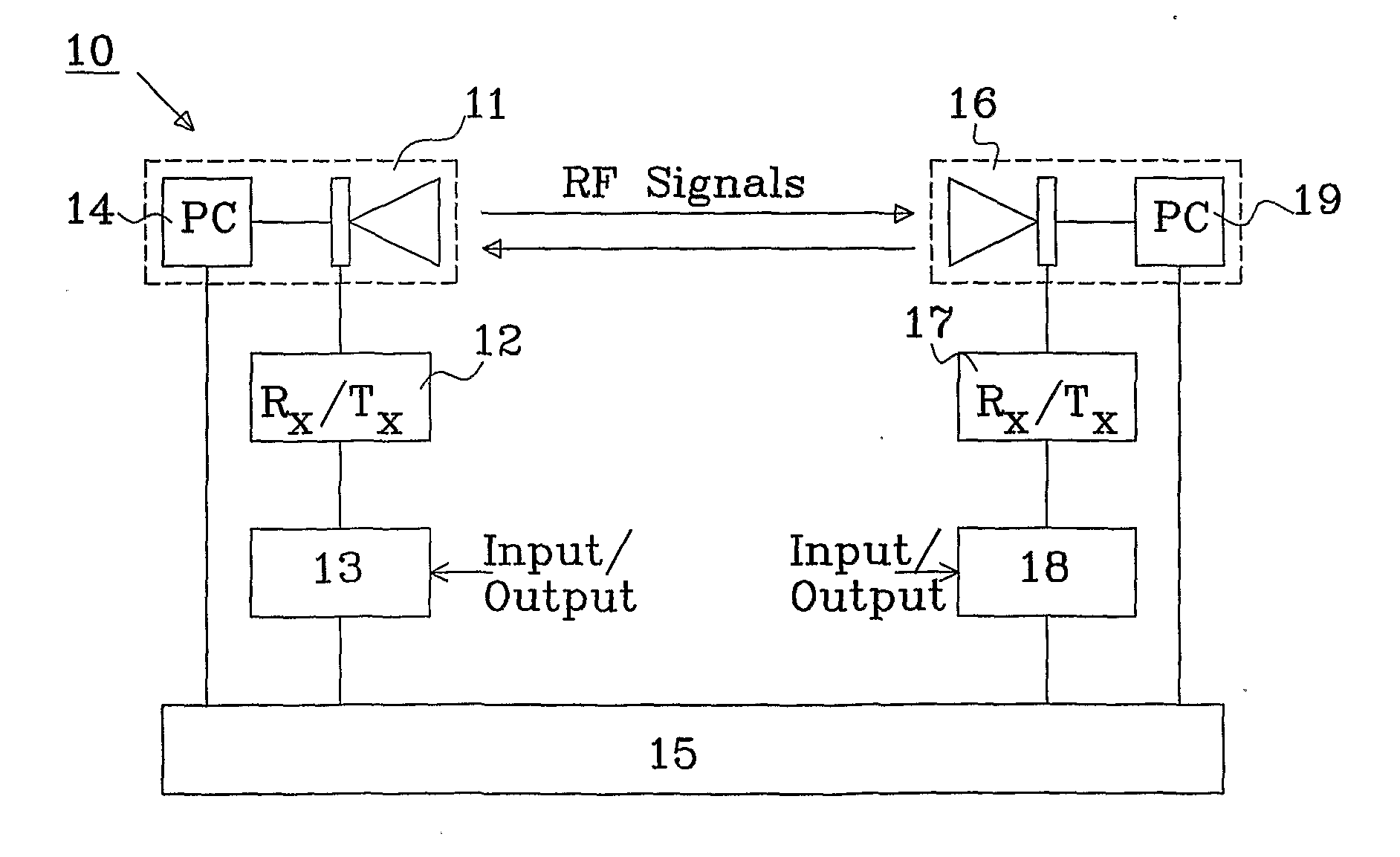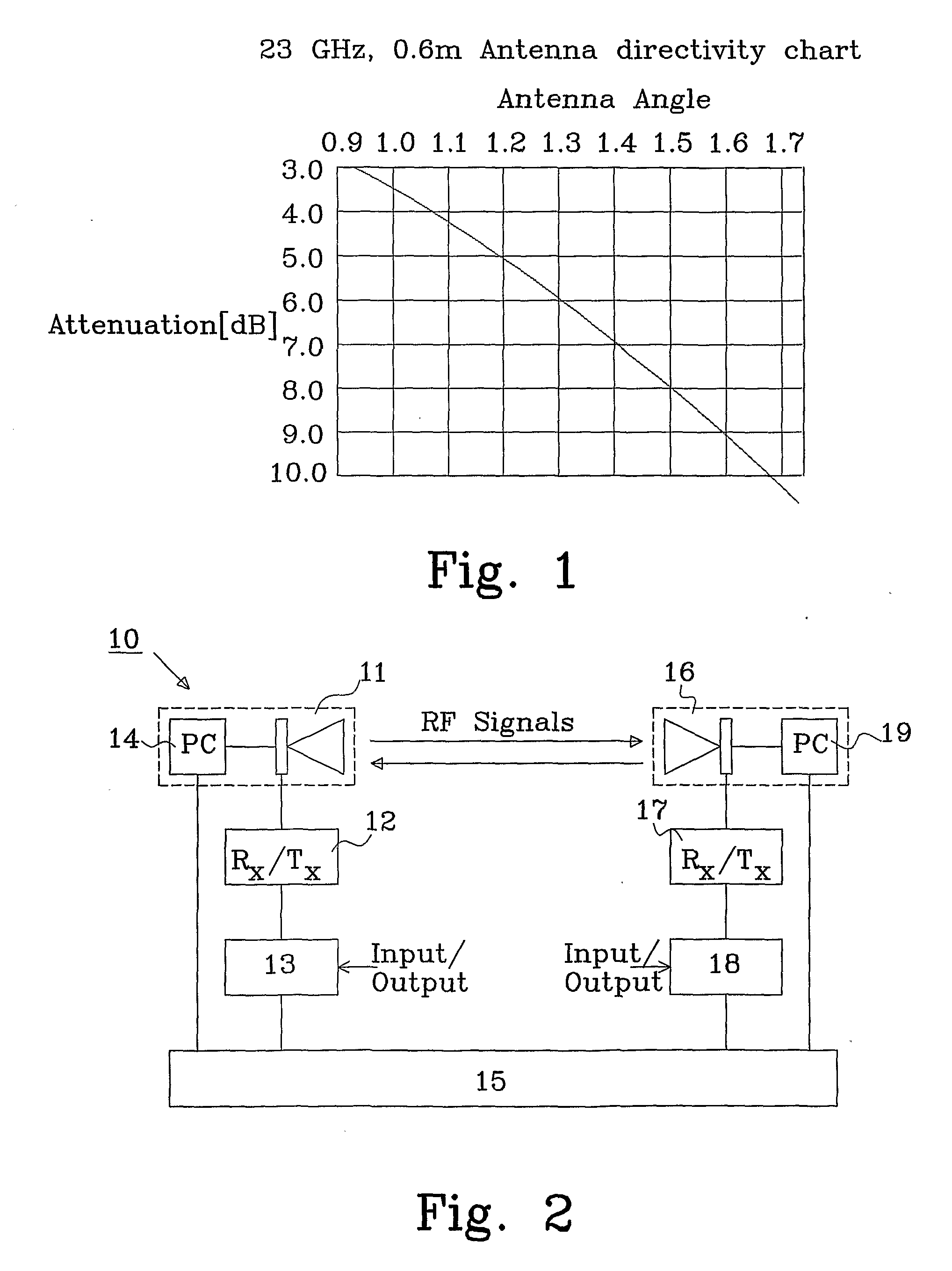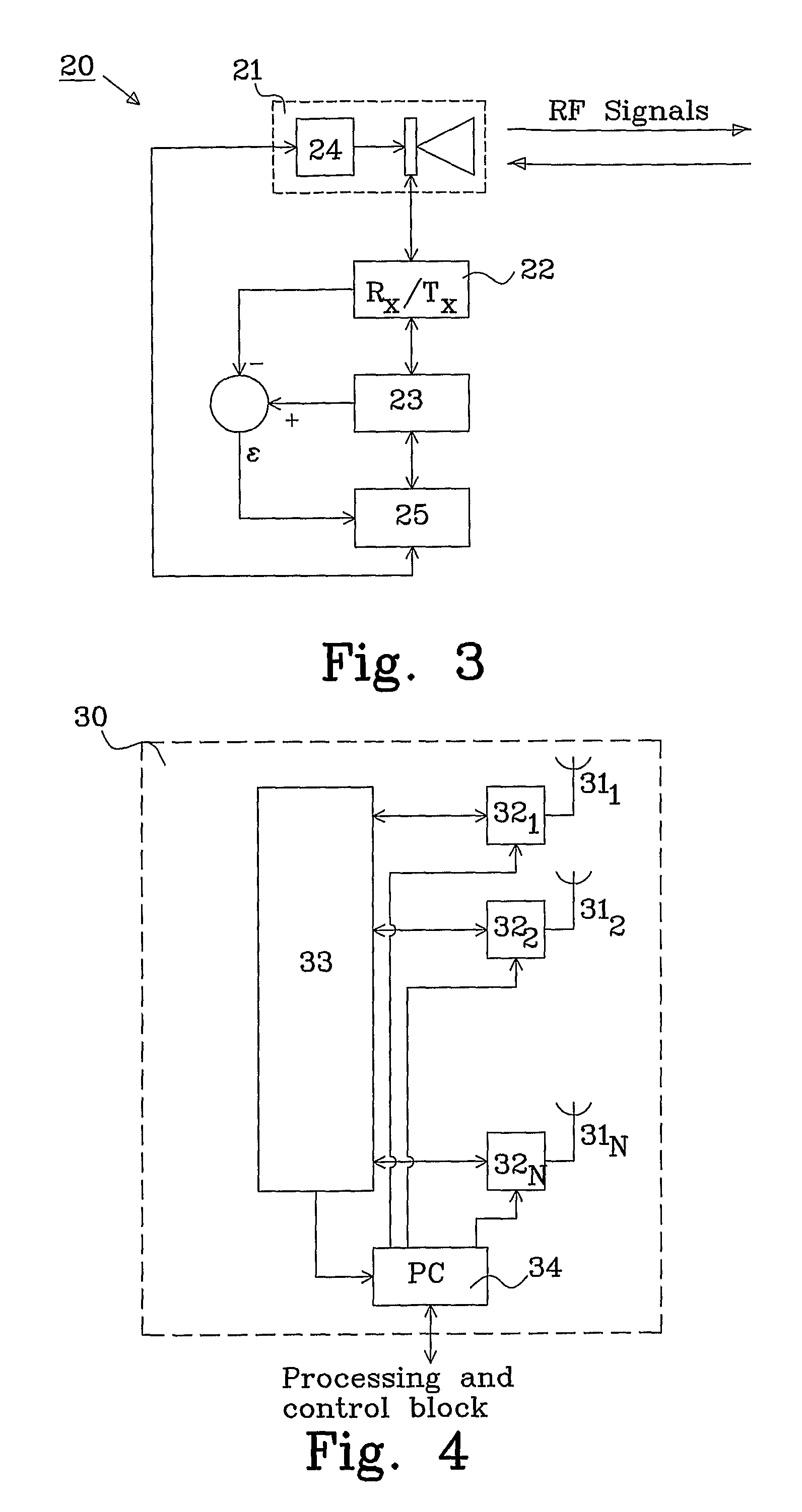System and method for mast vibration compensation
a vibration compensation and mast technology, applied in the field of systems and methods for mast vibration compensation, can solve the problems of increasing the complexity of the mast where the microwave radios are mounted, the limiting factor of the overall site cost, and the higher the installation cost, so as to achieve the effect of acceptable communication requirements
- Summary
- Abstract
- Description
- Claims
- Application Information
AI Technical Summary
Benefits of technology
Problems solved by technology
Method used
Image
Examples
Embodiment Construction
[0018]The proposed solution is to use adaptive antennas instead of the classical parabolic narrow-beam antennas and to reduce the requirement on the mast stability using the electronic control of the adaptive antenna to compensate the mechanical mast vibrations in a backhaul network, e.g. using microwave radio links.
[0019]Adaptive antennas with electronic beam shape control are commonly implemented in base stations to provide a suitable communication link between the base station and a user terminal, as described in U.S. Pat. No. 6,917,337 to Iida et al. Furthermore, adaptive antennas have also been used in point to point (PTP) communication systems to implement an interference mitigation method, as described in the published application US 2008 / 0049672 to Barak et al.
[0020]A typical half power beam-width angle for a classical high performance parabolic antenna is in the range 1° to 3° depending on frequency band and the dimensions of the antenna. This has a consequence that the ant...
PUM
 Login to View More
Login to View More Abstract
Description
Claims
Application Information
 Login to View More
Login to View More - R&D
- Intellectual Property
- Life Sciences
- Materials
- Tech Scout
- Unparalleled Data Quality
- Higher Quality Content
- 60% Fewer Hallucinations
Browse by: Latest US Patents, China's latest patents, Technical Efficacy Thesaurus, Application Domain, Technology Topic, Popular Technical Reports.
© 2025 PatSnap. All rights reserved.Legal|Privacy policy|Modern Slavery Act Transparency Statement|Sitemap|About US| Contact US: help@patsnap.com



